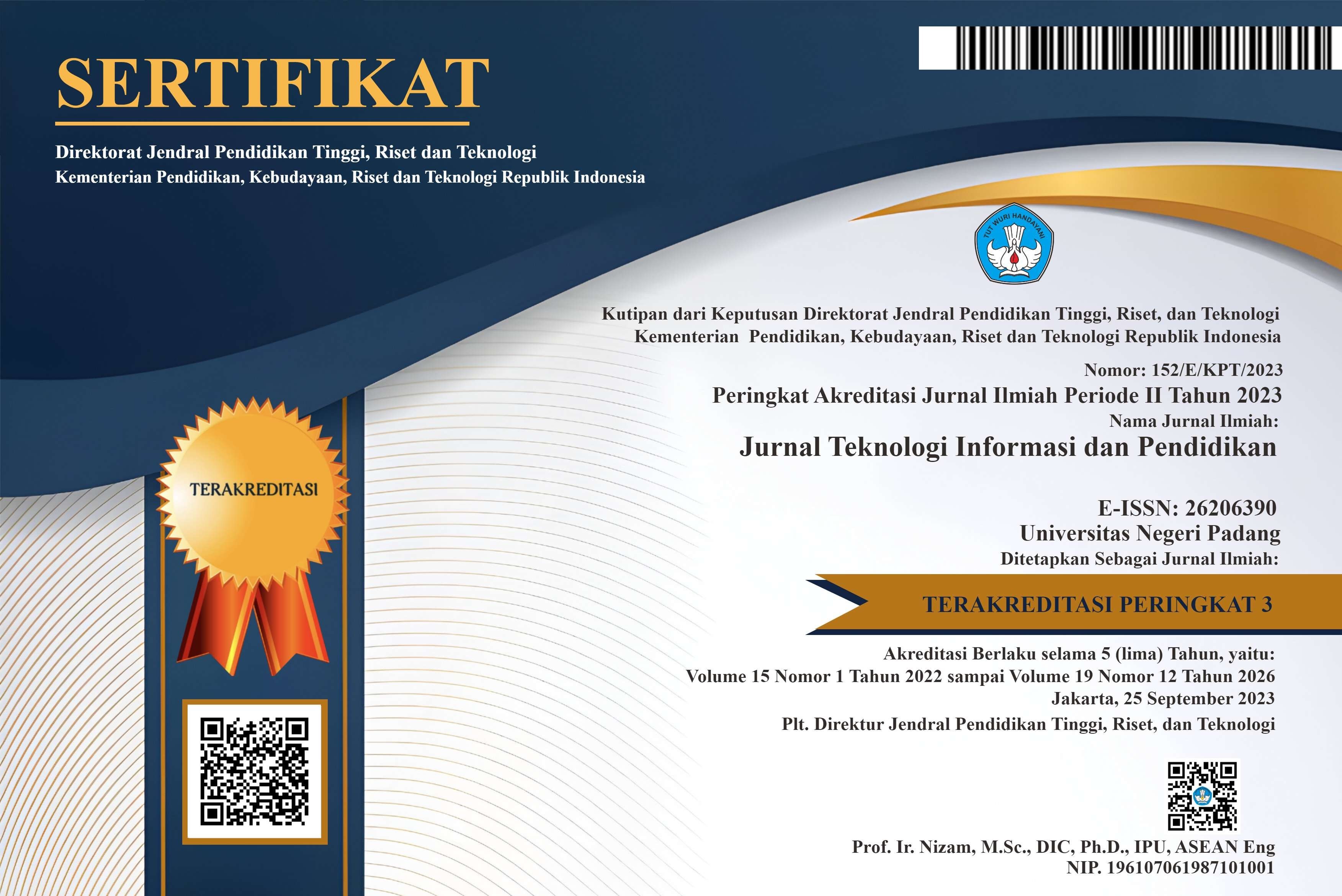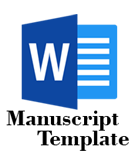Analysis of Cyberbullying on Social Media Using A Comparison of Naïve Bayes, Random Forest, and SVM Algorithms
Abstract
Social media allows the public, especially the younger generation, to access information and knowledge or communicate with others online. Unfortunately, the phenomenon of bullying has evolved into cyberbullying, encompassing various forms of violence such as taunting, insults, intimidation, or harassment carried out by young individuals through digital technology or social media platforms. Therefore, considering the available data, there is a need for a method to classify text comments on social media, whether they fall into the category of cyberbullying or not. One of the methods used is the creation of a cyberbullying classification model using a Support Vector Machine (SVM), Random Forest (RF), and Naive Bayes algorithms. This research aims to analyze cyberbullying in social media by comparing three different algorithms, namely Naïve Bayes, Random Forest, and SVM. The research results show that in the classification analysis, the Support Vector Machine (SVM) model performed the best, with an accuracy of 85%, precision of 79.93%, and recall of 94.29%. The Naive Bayes model also provided satisfactory results, with an accuracy of around 82.19%, precision of 81.29%, and recall of 85.10%. Meanwhile, the Random Forest (RF) model had a lower accuracy of approximately 73.15%, with a precision of 74.05% and a recall of 77.79%.
References
H. Y. Al-aziz and S. Monalisa, “Comparison of Facebook and Instagram to Assess the Efectiveness of Advertising Channels in Customer Acquisition,” J. Teknol. Inf. dan Pendidik., vol. 15, no. 2, pp. 64–72, 2023, doi: 10.24036/jtip.v15i2.677.
C. Destitus, W. Wella, and S. Suryasari, “Support Vector Machine VS Information Gain: Analisis Sentimen Cyberbullying di Twitter Indonesia,” Ultim. InfoSys J. Ilmu Sist. Inf., vol. 11, no. 2, pp. 107–111, 2020, doi: 10.31937/si.v11i2.1740.
L. Septiani, “Jumlah Pengguna Internet di Indonesia 212,9 Juta - Teknologi Katadata.co.id,” Katadata.co.id, Feb. 22, 2023. https://katadata.co.id/desysetyowati/digital/63f5d758a2919/jumlah-pengguna-internet-di-indonesia-212-9-juta (accessed Apr. 12, 2023).
I. Saputra and D. Rosiyadi, “Perbandingan Kinerja Algoritma K-Nearest Neighbor, Naïve Bayes Classifier dan Support Vector Machine dalam Klasifikasi Tingkah Laku Bully pada Aplikasi Whatsapp,” Fakt. Exacta, vol. 12, no. 2, p. 101, 2019, doi: 10.30998/faktorexacta.v12i2.4181.
T. N. Lam, D. B. Jensen, J. D. Hovey, and M. E. Roley-roberts, “Heliyon College students and cyberbullying : how social media use affects social anxiety and social comparison,” Heliyon, vol. 8, no. May 2022, p. e12556, 2023, doi: 10.1016/j.heliyon.2022.e12556.
M. F. Naufal, T. Arifin, and H. Wirjawan, “Analisis Perbandingan Tingkat Performa Algoritma SVM, Random Forest, dan Naïve Bayes untuk Klasifikasi Cyberbullying pada Media Sosial,” Jurasik (Jurnal Ris. Sist. …, vol. 8, pp. 82–90, 2023.
A. Tariq et al., “Modelling, mapping and monitoring of forest cover changes, using support vector machine, kernel logistic regression and naive bayes tree models with optical remote sensing data,” Heliyon, vol. 9, no. 2, p. e13212, 2023, doi: 10.1016/j.heliyon.2023.e13212.
T. J. Melmambessy, “Analysis of the Opinion Students about The Online Learning System During the Pandemic Using The K-NN and Naïve Bayes Methods,” J. Teknol. Inf. dan Pendidik., vol. 16, no. 1, pp. 75–85, 2023, doi: 10.24036/jtip.v16i1.702.
P. Yi and A. Zubiaga, “Session-based cyberbullying detection in social media: A survey,” Online Soc. Networks Media, vol. 36, no. May, 2023, doi: 10.1016/j.osnem.2023.100250.
M. Nabil, N. Pribadi, N. Chamidah, K. K. Cyberbullying, and R. Forest, “Klasifikasi Tweet Cyberbullying dengan Menggunakan Algoritma Random Forest,” pp. 512–520, 2022.
M. Karim, “Analisis Sentimen Pada Twitter Menggunakan Support Vector Machine Dengan Modifikasi Lexicon Inset Dan Sentis- Trength _ Id ( Studi Kasus : Vaksinasi Covid-19 ),” 2022.
W. W, “Comparison Of Clustering Levels Of The Learning Burnout Of Students Using The Fuzzy C-Means And K-Means Methods,” J. Teknol. Inf. dan Pendidik., vol. 16, no. 1, pp. 38–53, 2023, doi: 10.24036/jtip.v16i1.668.
A. S. Syahab, “Comparison of Machine Learning Algorithms for Classification of Ultraviolet Index,” vol. 15, no. 2, 2023.
S. U. Hassan, J. Ahamed, and K. Ahmad, “Analytics of machine learning-based algorithms for text classification,” Sustain. Oper. Comput., vol. 3, no. February, pp. 238–248, 2022, doi: 10.1016/j.susoc.2022.03.001.
N. Lashkarashvili and M. Tsintsadze, “Toxicity detection in online Georgian discussions,” Int. J. Inf. Manag. Data Insights, vol. 2, no. 1, p. 100062, 2022, doi: 10.1016/j.jjimei.2022.100062.
S. R. Ahmad, “Website-Based E-Market (E-Patali) Application For Gorontalo City Central Market,” J. Teknol. Inf. dan Pendidik., vol. 16, no. 1, pp. 64–74, 2023, doi: 10.24036/jtip.v16i1.350.
H. Santoso and R. A. Putri, “Deteksi Komentar Cyberbullying pada Media Sosial Instagram Menggunakan Algoritma Random Forest Cyberbullying Comment Detection on Instagram Social Media Using Random Forest Algorithm,” vol. 13, no. April, pp. 62–72, 2023.
M. N. Huda, D. A. Fauzan, M. Raihan, S. Putra, and N. Sabila, “Jurnal KomtekInfo Optimalisasi Model Klasifikasi Sentimen Netizen Terhadap Merek,” J. KOmtekInfo, vol. 10, no. 1, pp. 21–27, 2023, doi: 10.35134/komtekinfo.v10i1.360.
E. S. Mohamed, T. A. Naqishbandi, S. A. C. Bukhari, I. Rauf, V. Sawrikar, and A. Hussain, “A hybrid mental health prediction model using Support Vector Machine, Multilayer Perceptron, and Random Forest algorithms,” Healthc. Anal., vol. 3, no. April, p. 100185, 2023, doi: 10.1016/j.health.2023.100185.
N. Nafi’iyah, “Svm Algorithm for Predicting Rice Yields,” J. Teknol. Inf. dan Pendidik., vol. 13, no. 2, pp. 50–54, 2020, doi: 10.24036/tip.v13i2.341.
Copyright (c) 2024 Jurnal Teknologi Informasi dan Pendidikan

This work is licensed under a Creative Commons Attribution-ShareAlike 4.0 International License.















.png)














